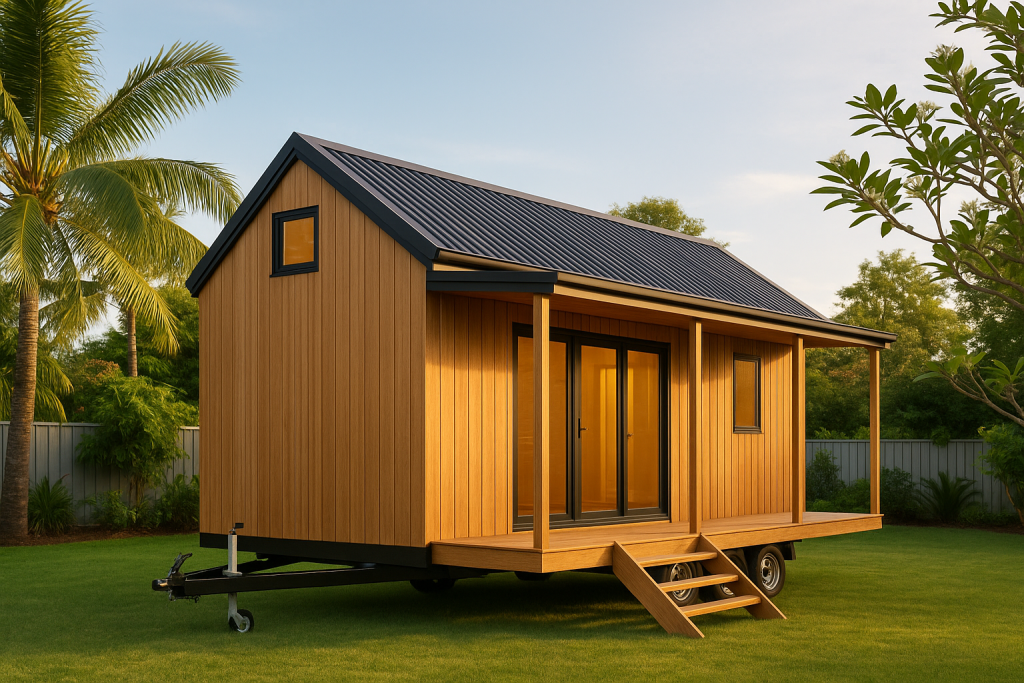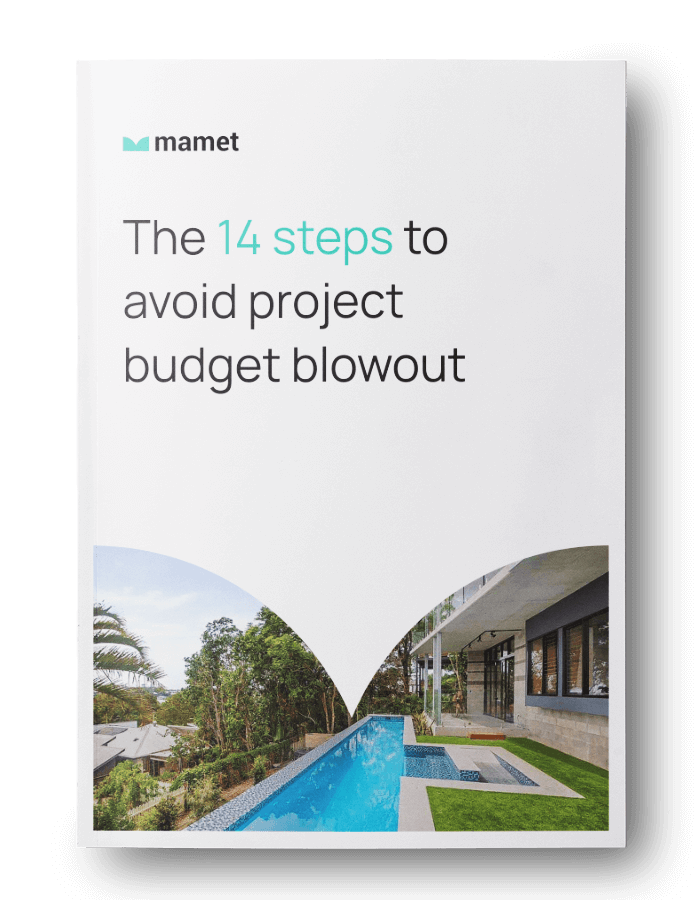Don’t Buy a Tiny Home Until You Read This: 7 Expensive Traps Most Buyers Miss
Don’t Buy a Tiny Home Until You Read This: 7 Expensive Traps Most Buyers Miss
At Mamet Homes, we love smart, small, beautiful spaces — when they’re safe, compliant and future-proof. But every week we speak with people who’ve been burned by “tiny home” promises that didn’t match legal reality. The biggest misunderstanding? Most “tiny homes on wheels” (THOW) are treated as caravans — not Class 1a dwellings — which flips the rules for who can build them, what standards they must meet, where you can live in them, and how they’re financed and insured. If you’re considering a tiny home in Queensland, read this first — we’ve included government and industry links so you can check everything yourself.
1) Most tiny homes on wheels aren’t “homes” under the Building Code — they’re caravans
Queensland’s own planning guidance explains that how a “tiny home” is treated depends on whether it’s a fixed dwelling or a moveable/transportable structure. If it’s moveable (on wheels), councils commonly treat it as a caravan/moveable dwelling; if it’s fixed and serviced, it’s a dwelling and needs normal approvals and compliance like any other home. That “what is it?” fork in the road changes everything. (Planning)
Mainstream reporting has described tiny homes as sitting in a regulatory grey area between caravans and granny flats, often exempt from the Building Code in the moveable scenario — but still subject to local-law limits on how long you can live in them. That’s a world apart from a Class 1a dwelling that must meet the National Construction Code (NCC) and be built/overseen by a licensed builder. (ABC)
QBCC guidance also shows the flip-side: where a “temporary or portable” structure is a Class 1a dwelling (i.e., fixed/occupied as a home), NCC evidence-of-suitability and standard building/plumbing approvals apply — exactly the path we follow for compliant secondary dwellings. (QBCC)
Bottom line: if it’s on wheels, you’re usually not buying a “home” in the legal sense — so don’t assume Code-level quality, licensed builder oversight, or normal consumer protections.
2) “It’s mobile” is often marketing — many models aren’t legally towable
A lot of glossy THOW designs quietly exceed Australia’s light-trailer limits. The federal VSB1 rules for trailers up to 4.5 t ATM cap width at 2.5 m and height at 4.3 m. If your tiny house exceeds those, it’s not a general-access light trailer; you’re into oversize/overmass territory, special permits and route restrictions — or you simply can’t tow it as claimed. That’s not freedom; that’s a stranded asset. (Infrastructure Department)
Queensland’s transport guidance reinforces that vehicles/trailers must not exceed legal dimension limits (and if they already sit at the maximums, you can’t add projecting loads). It’s common for heavy, house-like constructions to blow past these limits once lined, fitted-out and furnished. (Queensland Government)
Reality check: If it can’t legally roll, “mobility” was a slogan — not a feature.
3) You may not be allowed to live in it long-term on your block (and rules vary wildly by council)
Because THOW are usually treated as caravans, local laws often restrict how long someone can reside in them on private land, or require permits/conditions. That’s not a planning-scheme dwelling right — it’s a local-law tolerance that can be narrow and changeable. (tinyhouse.org.au)
Recent reporting has shown councils experimenting with time-limited allowances (e.g., “up to six months in a 12-month period” in parts of QLD), which proves the point: permission is discretionary and variable, not guaranteed. The difference between two neighbouring LGAs can be night and day. (ABC)
Implication: your plan to house family or create rental income can be shut down by a routine local-law inspection — even if the marketing suggested otherwise.
4) Real enforcement happens: orders, evictions and removal
This isn’t theoretical. There are documented Queensland examples of councils issuing removal/eviction orders for unauthorised tiny homes that didn’t comply with planning or local-law settings. People have been forced to move out or remove structures despite the housing crisis. If your “home” isn’t a lawful dwelling, you have little leverage. (ABC)
5) Finance and insurance are not like a normal home
Because THOW are typically treated as caravans, buyers often find themselves looking at caravan/RV loans and caravan/motorhome insurance — not standard home loans and home insurance. The difference in terms, cover and exclusions can be stark, and the market shifts frequently. Even tiny-house industry bodies have acknowledged ongoing work to secure viable insurance options. (stryve.com.au)
Industry guides (and tiny-house vendors themselves) frequently point buyers toward caravan insurers — further underlining that, in the moveable scenario, you’re not being treated as a homeowner under ordinary residential products. Expect higher friction on lending and limitations on cover, especially for oversize/overmass builds that can’t be registered as compliant trailers. (blog.aussietinyhouses.com.au)
6) Planning to rent it out? You’ve entered the “moveable dwelling” tenancy world
Queensland uses a separate framework for moveable dwelling/caravan tenancies. Different forms, different processes, different rights and obligations. That’s a signal from government that a THOW is not a standard dwelling. And if your LGA caps how long a caravan can be lived in, your long-term rental plan can be non-starter regardless. (rta.qld.gov.au)
Consumer-law resources (and the Queensland Law Handbook) also draw a line between moveable dwellings and standard residential premises — again reinforcing that the legal category you buy into drives everything downstream. (Queensland Law Handbook Online)
7) Resale and valuation are unpredictable
Because a THOW is often a vehicle/caravan (or an unapproved structure) in the eyes of law and lenders, valuation, buyer finance and insurability are inherently volatile. You’re not trading an approved, insurable Class 1a dwelling on land; you’re marketing a caravan-classed product with narrow finance/insurance availability that can change over time. Smart money prices risk, and risk discounts value. (Note the lending/insurance realities above.) (stryve.com.au)
So… what’s the safer path?
If you want small, high-quality, and future-proof: build a compliant secondary dwelling (granny flat). It’s a fixed Class 1a dwelling with proper approvals, designed to the NCC, built by a licensed builder, and insurable/financeable like a normal home. It protects your liveability, rental options and resale. Start with a site-specific feasibility: zoning, overlays, siting, services and the cleanest approvals path for your address. (Planning)
How we help: Mamet models your concept in BIM, produces a transparent BOQ, navigates council/services, and delivers a beautifully finished, code-compliant home that belongs in your garden and on your balance sheet.
Frequently asked questions (quick answers you can verify)
Are tiny homes legal to live in full-time in Queensland?
It depends. THOW are usually treated as caravans, which puts you under local-law time limits/permit regimes that vary by council (and can change). Fixed and serviced tiny dwellings are treated as dwellings, needing standard approvals and NCC compliance. (tinyhouse.org.au)
If I “fix it” to the land, is it suddenly a house?
Yes — once it becomes a dwelling, you’re in standard approval territory (and NCC applies). That’s the route we recommend when you want a long-term home or income asset. (QBCC)
Can I just tow my tiny house when I move?
Only if it meets VSB1 light-trailer limits (e.g., 2.5 m width, 4.3 m height, ≤ 4.5 t ATM) and any route/permit conditions. Many large, house-like models exceed one or more limits, which kills general road access. (Infrastructure Department)
Could council really make me move it?
Yes. There are Queensland cases where councils have issued eviction/removal orders for unauthorised tiny homes. Compliance beats conflict. (ABC)
Final word: caveat emptor (buyer beware)
Tiny homes can look gorgeous online — but classification drives consequences. If it’s a caravan in law, you’re playing by caravan rules: road limits, local-law limits, different finance/insurance, and real enforcement risk. If you want the benefits of a home, build a home — a compliant secondary dwelling that meets Code and protects your investment. (Planning)
Frequently asked questions


